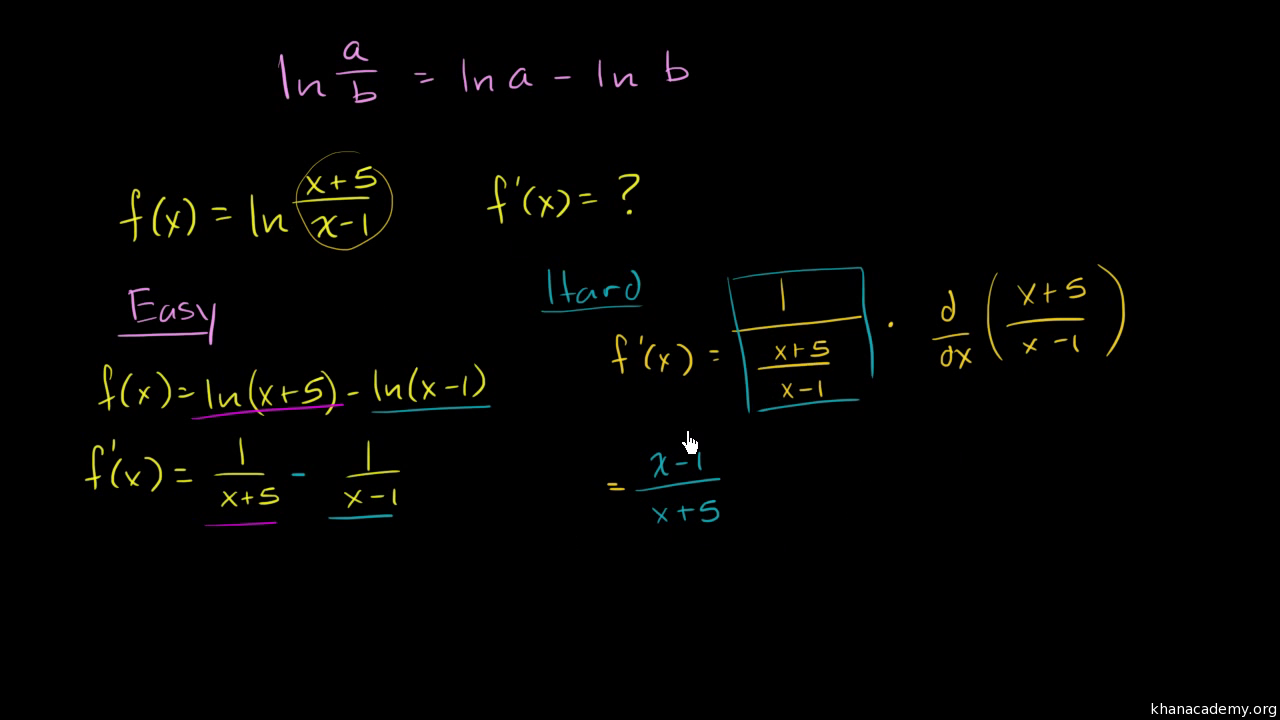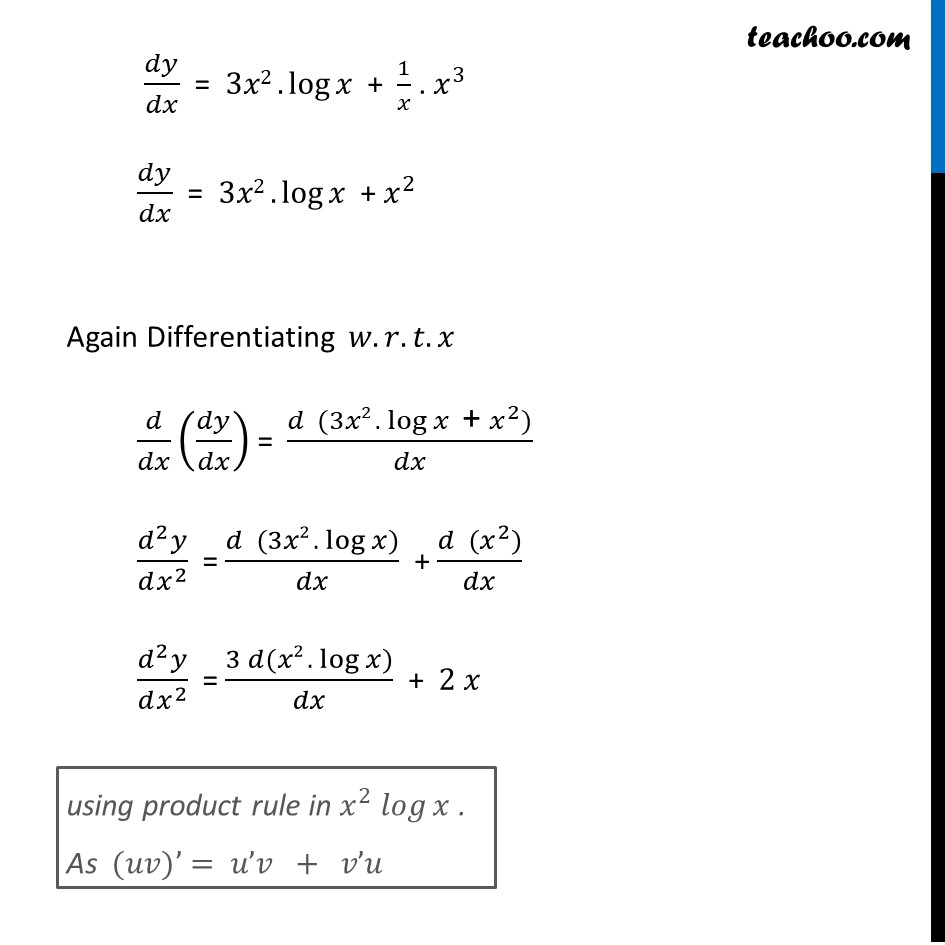

Note 1: This formula is derived from first principles. See change of base rule to see how to work out such constants on your calculator.)

Then we can obtain the derivative of the logarithm function with base b using: asked Apr 10 in Differentiation by Takshii (35.0k points) closed Apr 12 by Takshii. `=2\ cot\ 2x+x/(x^2+1)` Differentiating Logarithmic Functions with Bases other than e Next, we use the following rule (twice) to differentiate the two log terms: It means the same thing.įirst, we use the following log laws to simplify our logarithm expression: We need the following formula to solve such problems. For example, we may need to find the derivative of y = 2 ln (3 x 2 − 1). Just copy and paste the below code to your webpage where you want to display this calculator. A useful mathematical differentiation calculator to simplify the functions. Most often, we need to find the derivative of a logarithm of some function of x. An online derivative calculator that differentiates a given function with respect to a given variable by using analytical differentiation. 50 of votes are held by thousands of shareholders, none individually holding more than 1 per cent of the voting rights. 10 of voting rights are held by X, which is not related to Europe Holdings. Unfortunately, we can only use the logarithm laws to help us in a limited number of logarithm differentiation question types. Europe Holdings holds 40 per cent of the voting rights of Chocolate Plc. Derivative of y = ln u (where u is a function of x) At the end of the lesson, we will see how the derivative rule is derived. There are four example problems to help your understanding. In this lesson, we show the derivative rule for tan-1 (u) and tan-1 (x).

At a point, the derivative is defined to be. 2.) Derive the derivative rule, and then apply the rule. Note for second-order derivatives, the notation is often used. These are called higher-order derivatives. When a derivative is taken times, the notation or is used. The above graph only shows the positive arm for simplicity. Given a function, there are many ways to denote the derivative of with respect to. NOTE: The graph of `y=ln(x^2)` actually has 2 "arms", one on the negative side and one on the positive. The graph of `y=ln(x^2)` (in green) and `y=ln(x)` (in gray) showing their tangents at `x=2.`

The graph on the right demonstrates that as `t->0`, the graph of `y=(1+t)^` is:ġ 2 3 4 5 6 7 -1 1 2 3 -1 -2 -3 -4 x y slope = 1 slope = 1/2 Open image in a new page We shall prove the formula for the derivative of the natural logarithm function using definition or the first principle method.1 2 3 4 5 -1 -2 2 4 6 8 10 -2 t y e Open image in a new page


 0 kommentar(er)
0 kommentar(er)
